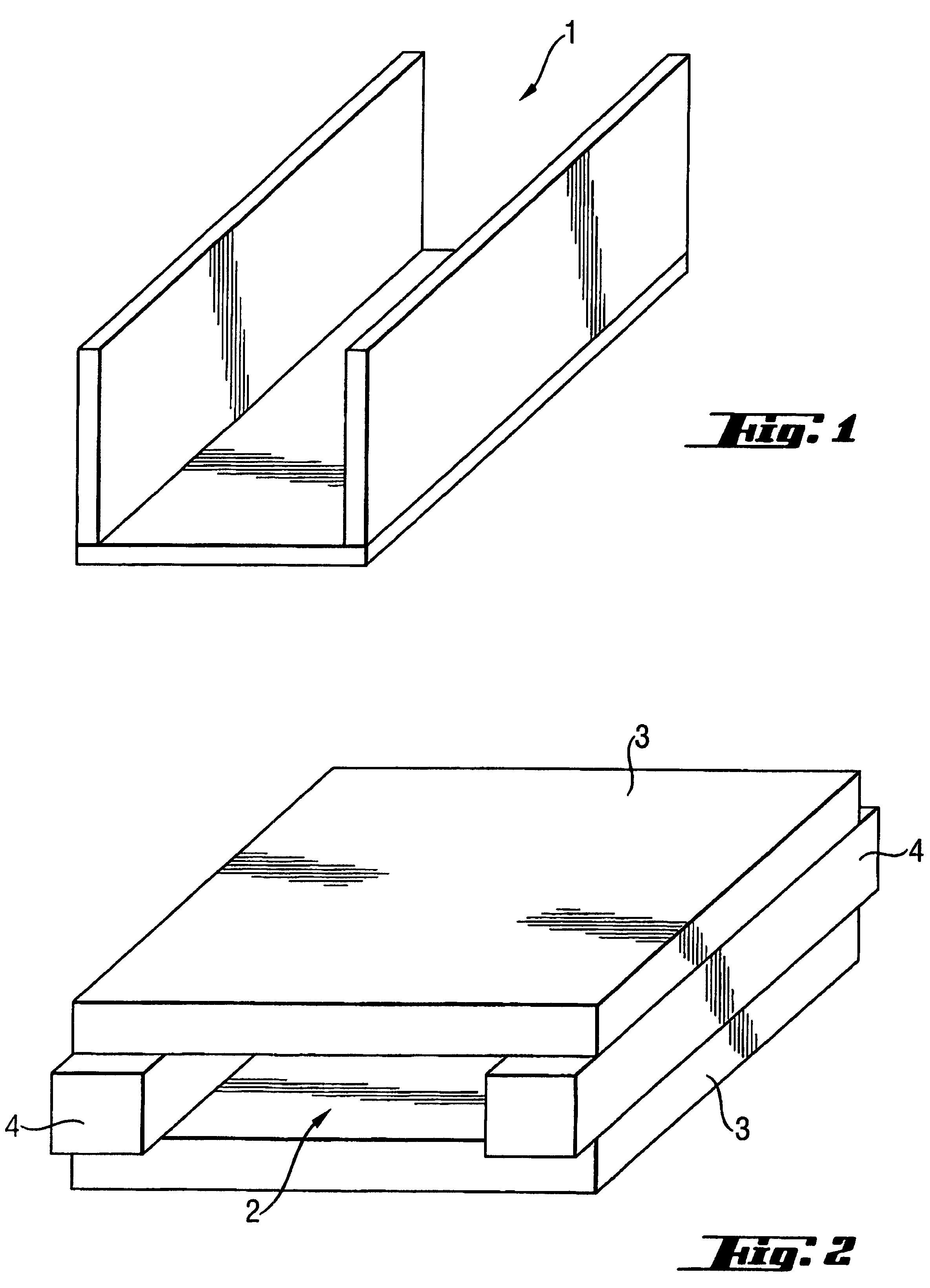Expandable mixtures that are devoid of isocyanates
- Summary
- Abstract
- Description
- Claims
- Application Information
AI Technical Summary
Benefits of technology
Problems solved by technology
Method used
Image
Examples
example 1
[0095]Preparation of N-phenylaminomethylmethyldimethoxysilane: 2095 g (22.5 mol) of aniline are placed in their entirety in a laboratory reactor and subsequently made inert by means of nitrogen. The aniline is heated to a temperature of 115° C. and 1159 g (7.5 mol) of chloromethylmethyldimethoxysilane are added dropwise over a period of 1.5 hours and the mixture is stirred for a further 30 minutes at 125-130° C. After addition of about 150 g of the silane, an increased amount of aniline hydrochloride precipitates as salt, but the suspension remains readily stirrable until completion of the addition.
[0096]The excess aniline is removed in a good vacuum (62° C. at 7 mbar). 1400 ml of n-heptane are subsequently added at room temperature and the suspension is stirred at 10° C. for 30 min in order to crystallize all the aniline hydrochloride. This is subsequently filtered off. The solvent n-heptane is removed at 60-70° C. in a partial vacuum. The residue is purified by distillation (89-91...
example 2
[0098]52.0 g (298.5 mmol) of tolylene 2,4-diisocyanate (TDI) are placed in a 250 ml reaction vessel provided with stirring, cooling and heating facilities and heated to about 50° C. A mixture of 60 g (141.2 mmol) of a polypropylene glycol having a mean molar mass of 425 g / mol and 6 g (32.2 mmol) of 1-dodecanol is then added. The temperature of the reaction mixture should not rise to above 80° C. The polypropylene glycol had previously been dewatered by heating at 100° C. for 1 hour in an oil pump vacuum. After the addition is complete, the mixture is stirred at 80° C. for 15 minutes.
[0099]The mixture is subsequently cooled to about 50° C. and 10 ml of vinyltrimethoxysilane are added as reactive diluent. 61.1 g (294.1 mmol) of N-phenylaminomethylmethyldimethoxysilane (prepared as described in example 1) are then added dropwise and the mixture is subsequently stirred at 80° C. for 60 minutes. No isocyanate groups can be detected in the resulting prepolymer mixture by IR spectroscopy. ...
example 3
[0100]50 g of the prepolymer mixture from example 2 are placed in a pressure bottle valve and mixed with 1.5 g of foam stabilizer PC STAB EP 05 (Wacker Chemie GmbH, Germany) and a catalyst mixture composed of 0.5 g of bis(2-dimethylaminoethyl) ether (Jeffcat® ZF20 from Huntsman) and 0.5 g of aminopropyltrimethoxysilane (A1110 from Crompton).
[0101]This mixture is subsequently treated with a blowing agent mixture composed of 8 ml of a propane / butane mixture (2:1) and 1.5 ml of dimethyl ether as blowing agent. This gives a clear and very fluid solution composed of blowing agents, additives and prepolymer.
[0102]A further 10 ml of propane / butane are added to this solution, but these no longer physically dissolve. An emulsion can be obtained from this mixture without any problems at all by brief shaking, i.e. by means of about 10-15 easy back and forth movements, and this remains stable for at least 1 hour. At room temperature, it takes 2-3 days for the emulsion to demix completely. Even ...
PUM
| Property | Measurement | Unit |
|---|---|---|
| Fraction | aaaaa | aaaaa |
| Fraction | aaaaa | aaaaa |
| Fraction | aaaaa | aaaaa |
Abstract
Description
Claims
Application Information
 Login to view more
Login to view more - R&D Engineer
- R&D Manager
- IP Professional
- Industry Leading Data Capabilities
- Powerful AI technology
- Patent DNA Extraction
Browse by: Latest US Patents, China's latest patents, Technical Efficacy Thesaurus, Application Domain, Technology Topic.
© 2024 PatSnap. All rights reserved.Legal|Privacy policy|Modern Slavery Act Transparency Statement|Sitemap



